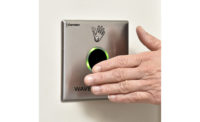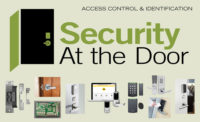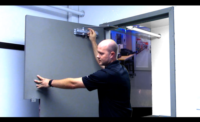Now more than ever, people are conscious of the surfaces they touch. When it comes to entering a door, any time you don’t have to touch a handle, it’s a relief. In the access control industry, the word “frictionless” has been a growing trend for a while; now it has even more benefit for end users. And when it comes to door activation devices — those push buttons, bars and switches — the most recent technologies and products introduced by some of the major manufactures tie in well with these concerns. In addition to touch-free options, some of the latest technology trends also help dealers, integrators and their customers save money, energy and time.
“Accessibility is the key to offering building occupants a seamless user experience,” says Jay Vaitkus, business development director, Norton Door Controls, ASSA ABLOY, New Haven, Conn. “With door activation devices, we’re seeing trends in the increased use of smarter technology; the inclusion of energy efficient options; the use of automatic door operators in more spaces like offices, conference rooms and bathrooms; and more of a focus on design and aesthetics. And considering today’s heightened concerns over the prevention of germ transmission, touchless door activation devices are now in high demand for all kinds of spaces.”
Wi-Fi Programmable Door Operator
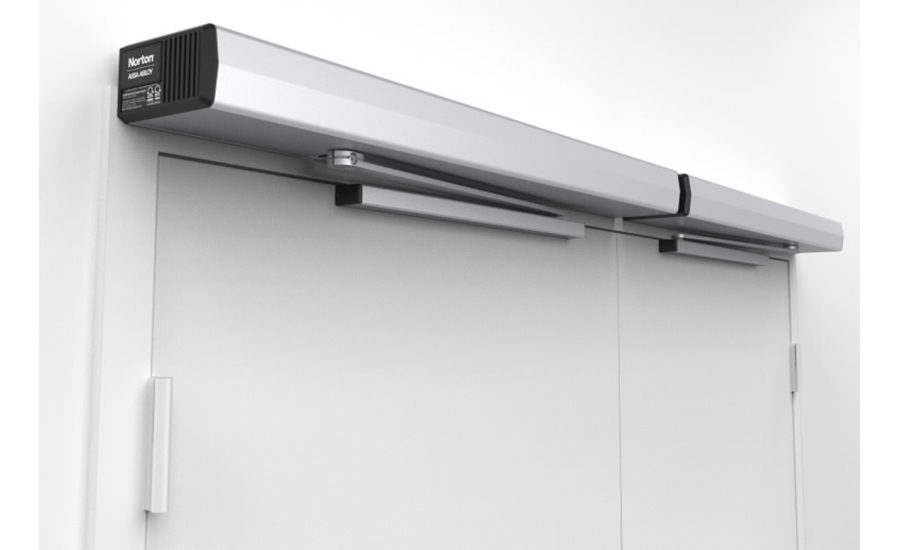
Norton Door Controls, an ASSA ABLOY Group brand, launched its new 6300 Series Low Energy Door Operator, which addresses a common challenge by enabling installers to quickly and easily program and adjust settings using a Wi-Fi-enabled smart device without the need to download an app or additional software. In addition, settings can be logged and copied to other 6300 Series units, making it easy to setup and standardize settings across multiple operators within a facility. Adjustments can also be made using a smart device
Visit www.NortonDoorControls.com/6300 for more information.
Norton Door Control’s latest product is its 6300 Series Low Energy Door Operator, Vaitkus says. In addition to being able to be remotely programmed and energy efficient, the door operator can be combined with hands-free opening. “Trends in spaces such as bathrooms where motion-sensor devices have become prevalent, are just starting to expand the same touchless experience to the door,” he adds. “Now with the focus on reducing the transmission of germs in multiple spaces from hospitals to schools, demand is growing for Norton’s low energy door operators to be used in combination with either a wave-to-open switch or radio frequency devices to accomplish a safe, hands-free method for door control.”
Murray Lewin, senior product manager, dormakaba, Indianapolis, Ind., has seen a similar interest in his company’s touchless (wave-to-open) reader. “The principal need is convenience and safety, especially in view of the recent pandemic affecting the world’s population,” he says. The company’s RCI 910TC touchless switch operates automatic doors with just a wave of the hand and is a popular product in the healthcare vertical, for example.
Hand waving is one of the most common recent ways to add value to door activation devices. A popular product from Waterford, Mich.-based Safety Technology International (STI) is the Universal Touch Free Button, says Michael Mikaelian, vice president of sales. “[It] applies NoTouch Technology, which helps eliminate the spread of germs. Instead of pressing the button, a person must simply wave their hand in front of the device. The motion will be recognized and the door will unlatch, preventing the spread of germs from hand to button or button to hand.”
dormakaba Touchless Switch
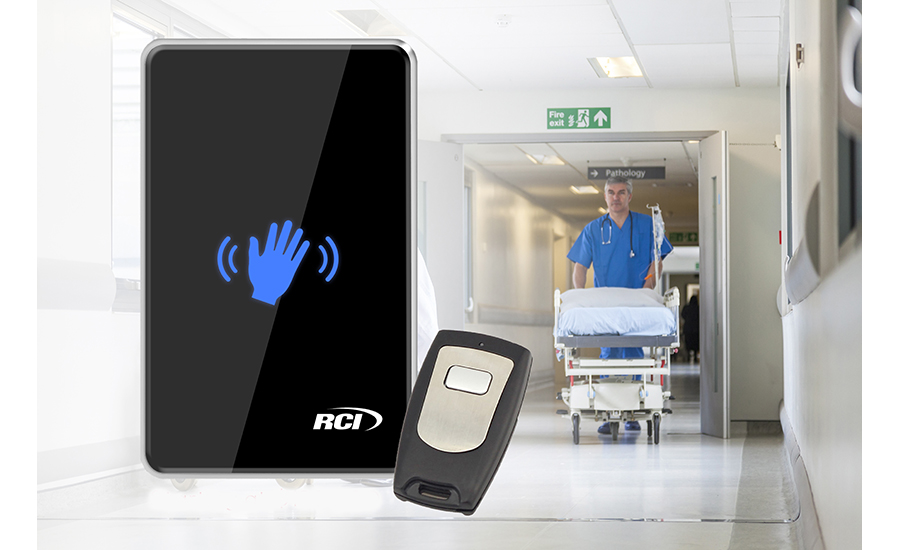
The RCI 910TC touchless switch operates automatic doors with just a wave of the hand. It features gesture control with a secondary Normally Open (NO) mechanical switch. Hands-free operation is ideal for any workplace environment where the spread of infectious disease through surface contact is a concern. The 910TC features remote control, manual override in the event of power loss, and an adjustable activation zone.
Visit dormakaba.com for more information.
Another value-add is energy savings, which also saves the customer money. Camden Door Controls, Mississauga, Ontario, Canada, has provided its SureWave hands-free switches for some time, with models that can operate at up to 6 feet. But the latest advance in door controls from the company involves wireless entry control that is energy efficient, says David Price, vice president, communications and corporate development. The company’s Kinetic wireless door activation switches are powered by the simple motion of pushing the switch, eliminating the need for wired or battery power. “This ‘power harvesting’ wireless system uses the energy created by the operation of the switch to power the wireless transmitter,” Price explains. “There are no batteries to maintain or replace.”
Dealer & Integrator Benefits
While end users in almost all verticals are more interested than ever in more convenient or sanitary ways to open doors, many of the latest advances also benefit the dealer, integrator or installer as well.
The Norton door operator, for example, features remote setup and programming through a smartphone, Vaitkus says. “Installers have the ability to set up, program and continuously make adjustments straight from their phone (or other smart device) via a Wi-Fi connection without needing ladders or having to remove device covers.” The programming interface guides installers and users through setup and allows for more precise settings to be achieved. Programming can also be ported to other 6300 operators for standardization of settings across multiple units in a facility. “The 6300 Series improves the overall user experience for everyone, from the installers and maintenance teams to building occupants,” he says.
Kinetic by Camden
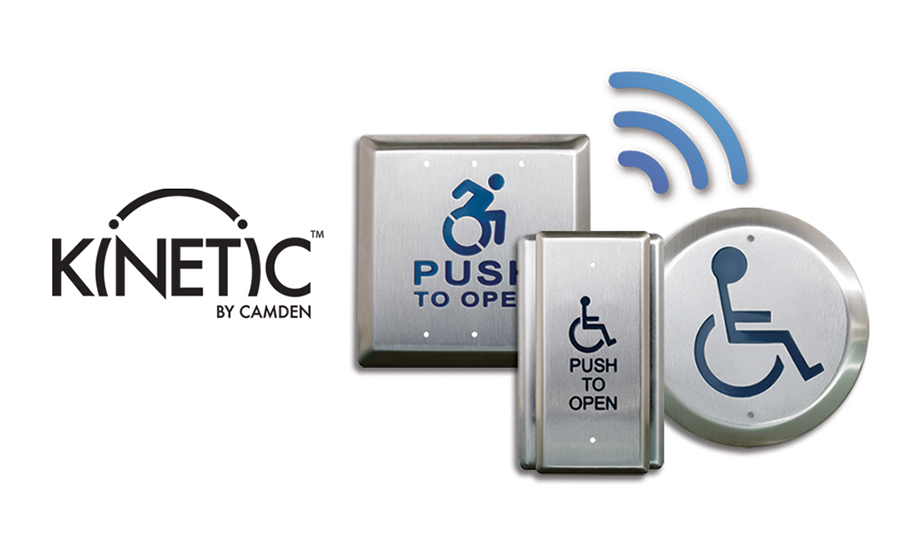
Camden’s newest innovative offering — Kinetic by Camden — is a 900 Mhz. ‘power harvesting’ wireless system that uses the energy created by the operation of the switch to power the wireless transmitter. There are no batteries to maintain or replace and no hazardous waste entering the landfill. It features an ultra-compact receiver (easily installed in automatic door operator cabinets), with field selectable momentary, delayed or latching relay operation.
Visit https://www.camdencontrols.com/promotions/kinetic for more information.
Camden’s wireless entry control devices require no extra training with common signal wireless devices, Price says.
STI’s button kits are ready to assemble out of the box and include a variety of options, Mikaelian says. “This helps dealers and integrators eliminate the need to have to stock dozens of push buttons on their shelves and wasting precious time and money tracking down the right button for a customer … [They] offer everything required to provide what the customer wants in one convenient package.”
Lewin says technology such as mobile apps and touchless switches are a great way to help end users modernize and increase safety and security at their facilities today. “The mobile apps and touchless switch offerings allow dealers to upgrade clients to these convenient methods of access control; and in the situation where a new install is required, the dealers can immediately gravitate to this method of access control. The end user benefits from modern technology, but principally, convenience.”
However, Bill Smoyer, national sales manager for the distributor Access Hardware Supply, San Leandro, Calif, does caution the need to check with the local Authority Having Jurisdiction for any changes to door activation devices at a customer’s site.
“The applications of these devices are usually driven by local codes. Some markets have specific codes for release devices for electromagnetic locks … I have seen when using a motion detector to release a door the AHJs like a backup button that will cut the power directly and initiate a 30 second door release on a timer,” Smoyer says.
STI Activation Buttons
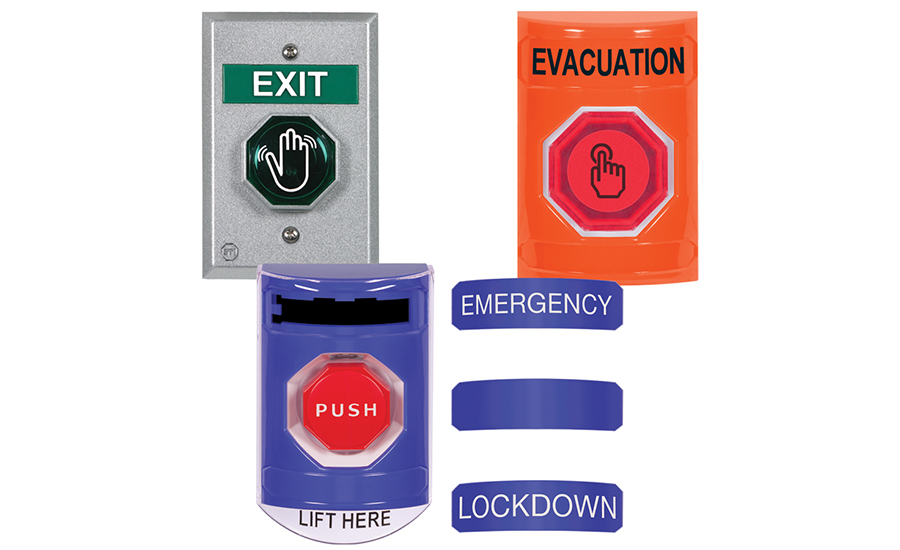
STI’s Universal Touch Free Button applies NoTouch technology, which helps eliminate the spread of germs. To exit a door, a person must simply wave their hand in front of the device. The infrared recognizes the motion and unlatches the door, preventing germs from transferring to hundreds of hands. Kit includes multiple color options and is easily installed.
Visit www.sti-usa.com/sdm145.
These advancements are just a sampling of what is available today, and some integrators say now is a great time to reach out to customers. Many of them are closed, particularly in the education sector, and being able to offer a technology that improves health and safety when organizations reopen could be a sales motivator.
This topic was covered generally on a recent PSA-sponsored webinar, “Systems Integration Roundtable: How to Keep Business Moving During COVID-19 Part 2.” J. Matthew Ladd, president of The Protection Bureau, Exton, Pa., spoke about dealing with client shutdowns or work restrictions, saying about security jobs in general (particularly in education), “We had a couple of clients really stonewalling us about doing work so I called them up personally. I asked them, ‘Why not do it now while you are shut down? You are going to have to clean anyway before students come in, so why not let us come in now?’ I had a couple of them turn around and say yes.”
More Online
For more information on door activation devices, access control or the ongoing COVID-19 crisis, visit SDM’s website where you will find the following:
“4 Key Elements of Selling Door Activation Devices”
www.SDMmag.com/key-elements-of-selling-door-activation-devices
“State of the Market 2020: Access Control”
www.SDMmag.com/articles/state-of-the-market-2020-access-control
SDM Magazine’s Coronavirus Coverage


